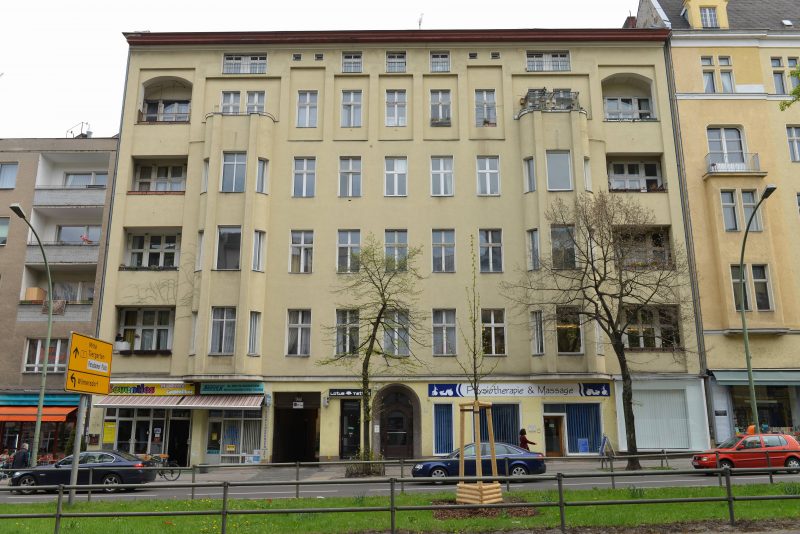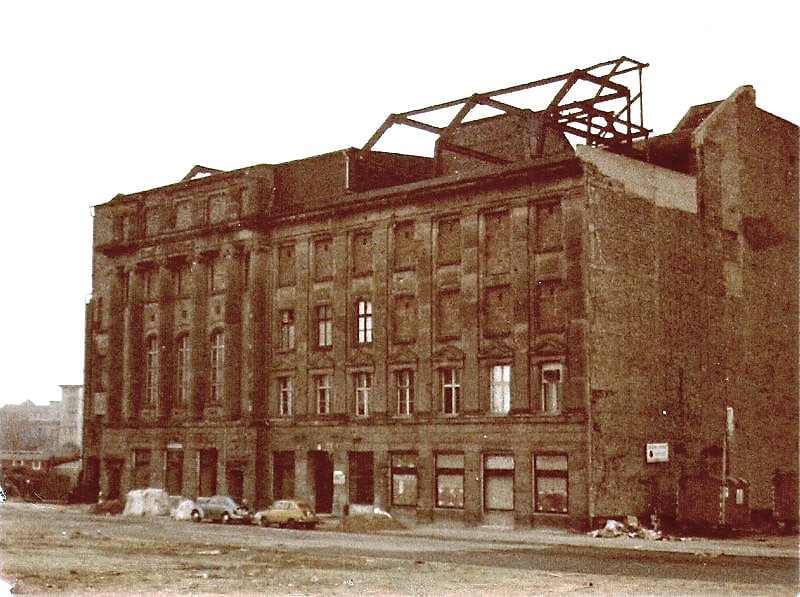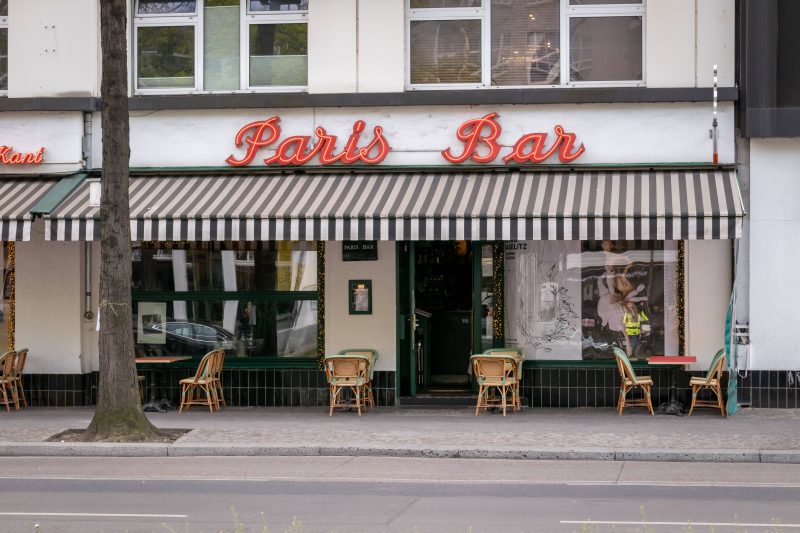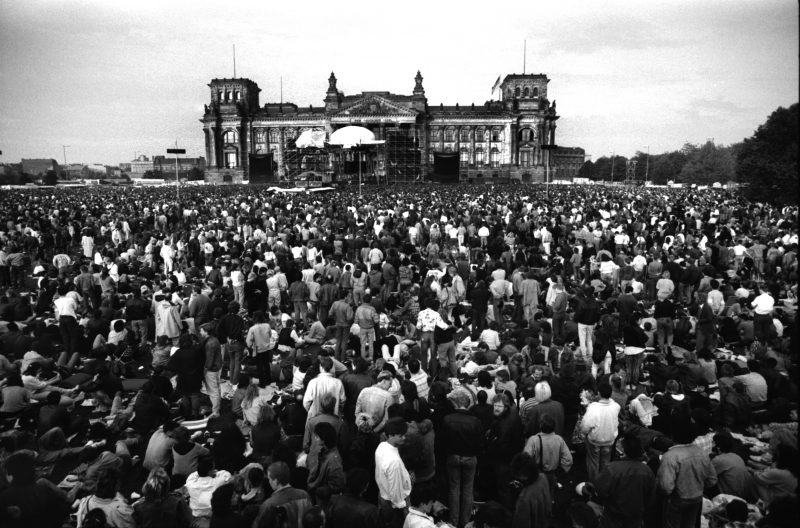No other international star has left such a lasting impression on Berlin as David Bowie. When the British musician arrived in West Berlin in 1976, he found himself in a divided city. Subcultures were emerging; there were drugs but little glamour. But away from the pop hype and flashbulbs, Bowie found his way to himself during these influential years.

After an excessive phase in Los Angeles, Bowie was physically exhausted and artistically burned out. His longing for peace and his enthusiasm for the Weimar era and its artists, above all Bertolt Brecht and the expressionist ‘Die Brücke’ painters, made him think of Berlin.
In 1976, he moved into an apartment in Schöneberg, hung out in discotheques, bars and cafés, made friends with Berliners and stayed until 1978, during which time he produced three albums: Heroes, Low and Lodger, which went down in music history as the ‘Berlin Trilogy’.
Keen to follow in the footsteps of Ziggy Stardust himself? Here are 12 things you should know about David Bowie in Berlin.
1. The apartment in Hauptstraße

Hauptstraße 155, Schöneberg: an inconspicuous building, then as now. When David Bowie moved to West Berlin in 1976, he found the large and empty apartment there and made it his home for two years. Although he probably never really furnished it — the rooms remained sparse, and his circle usually ate out or at friends’ houses.
For a while Bowie had a famous roommate — Iggy Pop — until the scrawny stage legend was instructed to leave again for stealing food from the fridge. And so the Stooges frontman and godfather of punk relocated to a smaller place in the building behind.
2. The recordings at Hansa Studios

The Meistersaal in Kreuzberg, not far from Potsdamer Platz, had already become an important venue for Berlin’s creative community in the 1920s. Readings were held here, chamber music was played, a gallery lay below, and Austrian satirist Karl Kraus gave lectures.
The Nazis also used the building for concerts, and after the war there were revues, balls and cabaret. It was not until 1961 that the space was used for recording: first for the Ariola label, then from 1976 onwards, Hansa Tonstudios.
This was the start of the now legendary success story of the studio at Köthener Straße 38, where, in addition to David Bowie with his Berlin albums, U2, Depeche Mode, Nick Cave, Jack White, Nina Hagen and Eartha Kitt recorded important records.
3. The Berlin Trilogy by David Bowie

David Bowie came to Berlin seeking respite from all-consuming hype and addiction, but also to forge new musical paths. He was already enthusiastic about German avant-garde pioneers Neu!, Kraftwerk and Can, and he began dabbling with electronic sounds in partnership with Brian Eno.
The technological quantum leap took place in Berlin, with Bowie’s lyrics inspired by the gloomy, detached mood of the walled city. His records Low and Heroes are among the most important of his career.
4. Berlin friends: Romy Haag and others

Although Iggy Pop also lived in Berlin at the time and Bowie still had an international network of acquaintances, collaborators and cooperating musicians, he made new friends during his time in Berlin.
He often met with the great Romy Haag and was a welcome guest at her restaurant Chez Romy. Berlin fashion designer Claudia Skoda and her friends were also part of Bowie’s new Berlin circle. But he also maintained friendly relations with Wolf-Dieter Trewer, a former sailor and his landlord.
5. West Berlin bars, discos und cafés

West Berlin in the late 1970s was still limited in terms of memorable discotheques and bars. David Bowie frequented the queer café ‘Anderes Ufer’, now called ‘Neues Ufer’. He danced at ‘Dschungel’ and dined at Oswald Wiener’s Restaurant ‘Exil’ in Kreuzberg.
He was seen at ‘Chez Haag’, and also the ‘Paris Bar’ on Charlottenburg’s Kantstrasse. But his favourite place was arguably the ‘Brücke-Museum’. Bowie was particularly enamoured with the expressionist paintings of the Brücke artists Ernst Ludwig Kirchner and Erich Heckel.
6. Fame and glory in Berlin

Don’t kid yourself — Bowie’s time in Berlin was significant, but not actually very long. In fact, the third of his famous ‘Berlin Trilogy’ albums wasn’t even recorded here: Lodger was produced mainly in Switzerland and the USA.
Nevertheless, Bowie always returned to his former adopted country from later homes in London and New York, and was received as a Berliner of honour at concerts — with only Nick Cave garnering similar levels of adulation.
Bowie’s concert in the summer of 1987 at the Reichstag was a major event and his last appearance in the divided city.
7. David Bowie’s last concert in Berlin

David Bowie’s last-ever performance in Berlin took place in 2003. He made a stop at Max-Schmeling-Halle as part of the ‘Reality’ tour on November 3rd. At the age of 56, he was already one of the forerunners of the pop revolution and an established legend, but few would have thought this would be his last gig in Berlin.
In 2004 he performed at the Hurricane Festival, but ill health prevented him from playing any further concerts. He spent the last decade of his life in seclusion and only returned in 2013, then finally 2016, with new albums.
8. Where Are We Now?
After years of silence, Bowie returned with a bang. On his 66th birthday — January 8th, 2013 — he announced that The Next Day would be his new album. On the same day, he digitally released the pre-single Where Are We Now?.
In this song he reflects on the years spent in Berlin between 1976 to 1978, with his most personal and biographical lyrics yet. He mentions KaDeWe, Potsdamer Platz, the discotheque ‘Dschungel’ in Nürnberger Straße and the ‘Bösebrücke’ bridge between Wedding and Prenzlauer Berg.
9. The big exhibition

David Bowie wasn’t to return to Berlin in person, but the spectacular exhibition on his life and work brought his legend back into the limelight. Opening first at London’s Victoria and Albert Museum, the Bowie show, packed with costumes, instruments, videos, pictures, posters and sound installations, was a huge success.
At Martin-Gropius-Bau museum, the exhibition focused particularly on his time in Berlin. Many artefacts from the era were on display, including items relating to music recordings, as well as Bowie’s Berlin front door keys.
The curator of the show, Victoria Broackes, said in an interview in 2014 that Bowie had the happiest time of his life in Berlin. He overcame his drug addiction and reached new creative heights. “Here he succeeded in banishing his demons”, she was quoted as saying.
10. David Bowie’s death

David Bowie died on 10th January 2016, two days after his 69th birthday. In Berlin, hundreds of fans gathered in front of his former home in Schöneberg and placed flowers, photos and candles on his doorstep. Bowie’s songs played from loudspeakers for an impromptu and emotional singalong.
When Berlin radio station ‘radioeins’ was counting down the 100 most iconic Berlin anthems of all time in the summer of 2017, the hundred-strong jury voted Heroes into first place.
11. Ziggy in Berlin

In addition to athletes, politicians and film stars, legendary musicians also have a place at Madame Tussauds. In autumn 2017, an alien being appeared at the Berlin branch of the waxworks empire. Ziggy Stardust had landed.
Not a must for every Bowie fan, but the only opportunity for a selfie with the man who fell to earth.
12. Official memorial to David Bowie and his Berlin time

Photo: Imago/Joko
Who knows if the mayor of Berlin at the time, Klaus Schütz (SPD), who governed in 1976, gave even a passing thought to the fact that an English pop star — a drug-addicted and sexually ambivalent one, no less — lived in Schöneberg.
When the official Berlin commemorative plaque was unveiled in 2018 at the former home of David Bowie at 155 Hauptstraße, Berlin’s current mayor Michael Müller (SPD) was, in any case, on hand to utter the remarkable words: “You have to imagine that David Bowie came to West Berlin in 1976 to get off drugs”.
In fact, 1976 was not a drug-free period in West Berlin. 1978 saw the publication of the non-fiction novel Christiane F. – Wir Kinder vom Bahnhof Zoo, and soon afterwards, a film adaptation of the tragic tale of a young Berlin drug addict, to which Bowie contributed the soundtrack. Berlin’s dark fame as the heroin capital of Europe was thus sealed. David Bowie was not impressed by this; he got clean and moved on.
Original text by Jacek Slaski
On his frequent trips to the German capital, Bowie would often pass through Tegel Airport. We take a look at what’s next for Berlin’s favourite ugly airport.
[smbtoolbar]




